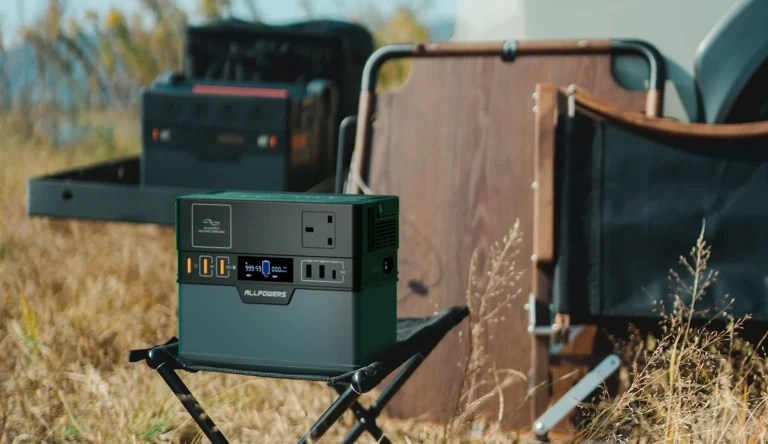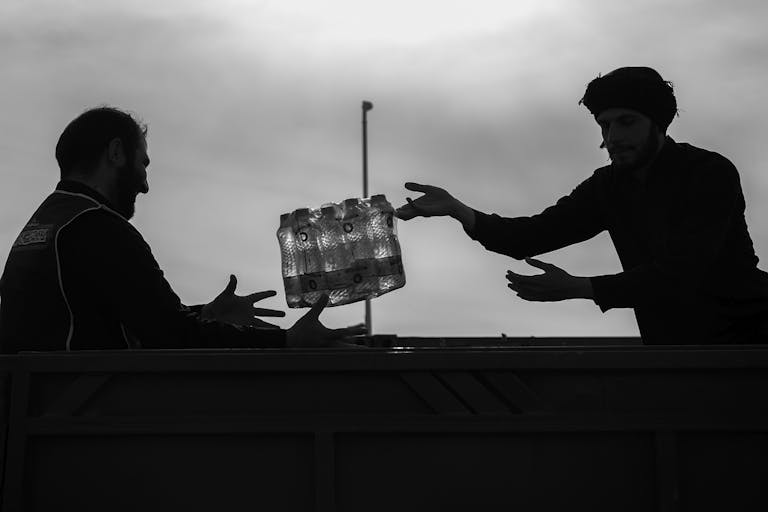Essential First Aid in 2025: How to Be Prepared at Home and Beyond

When we think about preparing for emergencies, our minds often go to power cuts, severe weather, or shortages of essentials. But one of the most overlooked aspects of being ready for the unexpected is something as simple—and vital—as having a well-equipped first aid kit at home. According to the UK Government’s Prepare campaign, being able to manage minor injuries and health issues is a key part of building personal resilience. It’s a small step that can make a big difference in a moment of crisis.
The Essentials of a First Aid Kit
Having a first aid kit on hand gives you the ability to respond quickly when something goes wrong—whether it’s a minor burn, a cut, a headache, or a sudden allergic reaction. Kits available from most major supermarkets like Asda, Tesco, and Aldi offer a decent starting point. They usually include the basics: plasters, sterile dressings, gloves, antiseptic wipes, and tape. But these off-the-shelf options often need supplementing to be truly comprehensive. The St John Ambulance guide on what to put in a first aid kit is a good reference for what to include. Consider adding everyday medicines such as paracetamol and ibuprofen for pain and fever, antihistamines for allergies or bites, and a digital thermometer to monitor illness. These small additions can dramatically increase the usefulness of your kit.
Beyond the Basics: First Aid Books and Courses
It’s also worth thinking beyond the physical items. A first aid manual or guidebook can be incredibly valuable, especially in stressful moments when you might need a reminder of what to do. Better still, consider taking a formal first aid course. The First Aid at Work qualification, offered by providers like St John Ambulance and the British Red Cross, is widely recognised and often funded by employers as part of their legal obligations under health and safety law. Even if your job doesn’t require it, learning these skills can boost your confidence and enable you to help others in emergencies—not just at home, but out in the world.
Multiple First Aid Kits: A Smart Approach
Every household should aim to have more than one first aid kit. A larger, more comprehensive kit should be kept at home, stocked with a wide range of supplies to cover everything from everyday accidents to more serious injuries. But that’s just the foundation. It’s just as important to keep a smaller, portable kit in any vehicles in the household. That way, you’re prepared when you’re away from home—on the school run, at the supermarket, or travelling longer distances.
If you regularly spend time outdoors or have active hobbies, it’s also wise to carry a dedicated kit with you. Activities like horse riding, hiking, mountain biking, or climbing carry their own risks—and your first aid supplies should reflect that. Tailor a kit to the environments you’re in and the injuries you’re more likely to encounter. For example, mountain bikers might benefit from including a support bandage or splint material in case of broken limbs, while hikers should consider blister plasters and hydration salts. A bit of planning can go a long way toward making sure you’re not caught off guard when something goes wrong.
Where to Store Your First Aid Kit
Where you store your kit at home matters too. It should be easy to find and quick to access in a hurry. A central location like a kitchen cupboard, hallway cabinet, or utility room works well—somewhere that’s easily reachable during an emergency. If your home has multiple levels or areas used regularly—like a workshop, garage, or garden room—it can be smart to keep additional kits in those spots too. And just as important as having the kit is making sure everyone in your household knows where it is and how to use it. Take a few minutes to show family members or housemates where the kit lives and talk through what’s inside. In an emergency, those few seconds saved can really matter.
Knowing How to Access the Right Level of NHS Care
When you need medical help, it’s important to know which NHS service to use to avoid overloading A&E and get the right treatment quickly.
For non-urgent advice, start with NHS 111. You can call or use their online service to get guidance on whether you need to visit A&E or if another service would be more appropriate.
Pharmacies can also offer advice and treatment for many common conditions like colds, aches, and minor injuries. The NHS Pharmacy First service is a great option for quick, accessible care without the need for a doctor’s appointment.
For less urgent issues, contact your GP—many surgeries offer phone consultations or extended hours. This helps ensure you get the right care while keeping A&E free for more serious cases.
Using NHS services wisely helps reduce pressure on emergency departments and means you’ll get the right treatment faster. For more information, visit the NHS website.
Basic First Aid Skills Everyone Should Know
At a minimum, everyone in your household should know how to perform basic first aid. This includes performing CPR and treating basic wounds. Knowing how to assess a situation, stop bleeding, or restart someone’s heart if needed can save a life. CPR is a simple skill that could make the difference in an emergency, and learning how to clean and dress a wound properly can prevent infections and promote healing. These are essential skills for anyone to have, regardless of age or experience. There are many online resources and courses available to help you learn these life-saving techniques.
Relying Less on the NHS During Emergencies
During times of crisis, the NHS can become overwhelmed, as we saw during the COVID-19 pandemic. The Protect the NHS campaign urged us all to be more considerate when seeking help, and it highlighted how essential it is for people to only use NHS services for the most serious emergencies. While the NHS is there to help, it’s important to understand that during widespread emergencies or high-demand periods, the availability of services may be limited.
In these times, it’s important not to rely on the NHS for everything. For non-critical issues, such as minor injuries, illnesses, or conditions, try to manage them at home or through local services like pharmacies, NHS 111, or your GP. By doing so, you can ensure that the NHS remains focused on treating life-threatening emergencies and not overwhelmed by less urgent cases. This approach is part of being a self-sufficient individual or household—being proactive about your own health and medical needs during stressful times can not only help you stay well but also help support the NHS in its most critical moments.
Preparedness isn’t just about having supplies; it’s about knowledge and mindset. Being able to stay calm and take effective action when something goes wrong is a cornerstone of resilience. In severe weather events or other emergencies where emergency services may be delayed, having even basic first aid skills and the right tools on hand can prevent a bad situation from getting worse.
This approach to self-reliance also contributes to the resilience of your community. If more households are able to manage minor injuries and illnesses at home, emergency services can focus their resources where they’re needed most. It’s a simple but powerful way to be part of a bigger picture.
For those looking to build their own emergency readiness, starting with a first aid kit is one of the easiest and most impactful steps. It doesn’t require specialist equipment or large expense—just a bit of thought, a few well-chosen supplies, and a willingness to be prepared. You may never need it, but if you do, you’ll be glad it’s there.
Further Resources for First Aid
For additional guidance on first aid, be sure to visit the NHS First Aid guide which provides advice for a variety of common injuries and conditions. It’s a great idea to print out this page and keep it available at home for quick reference during an emergency.
Have your own Thoughts? Leave a comment Below 🙂
A little disclosure: there are affiliate links on this website! That just means if you click on a link, find something you like and buy it, this site might receive financial benefit. Don’t worry, you won’t pay any extra – sometimes you might even get a discount. These links help to pay for the upkeep of the site.
Disclaimer: The content of this website is opinion and should never be considered as professional advice. Always consult a professional in the relevant areas.





